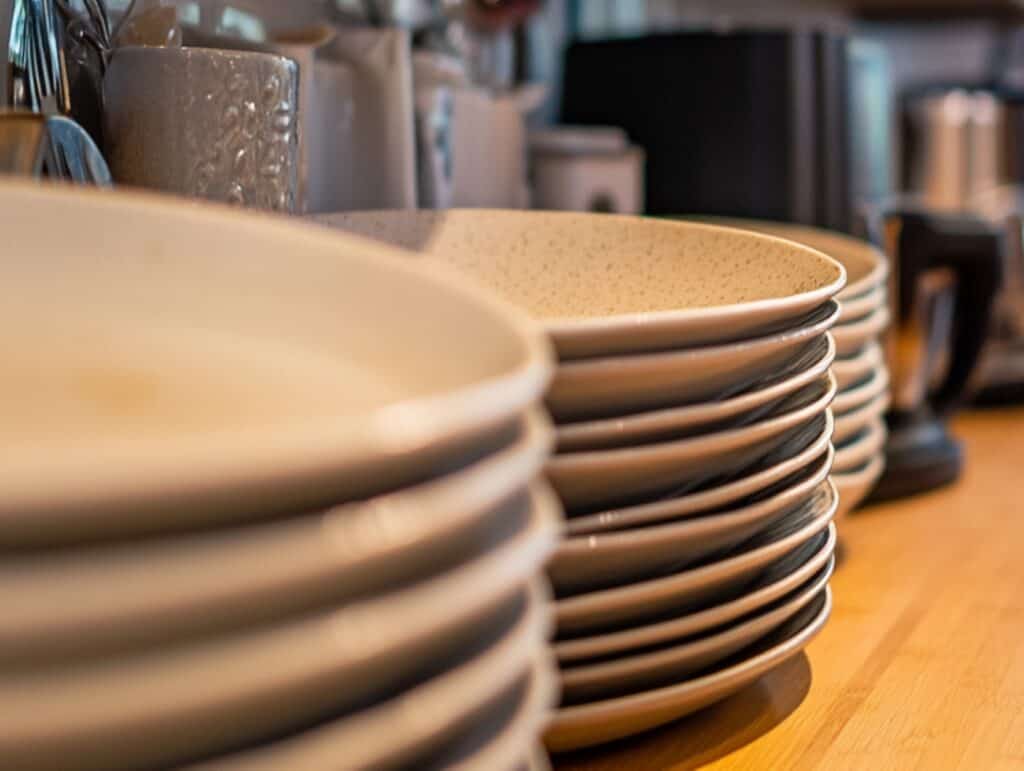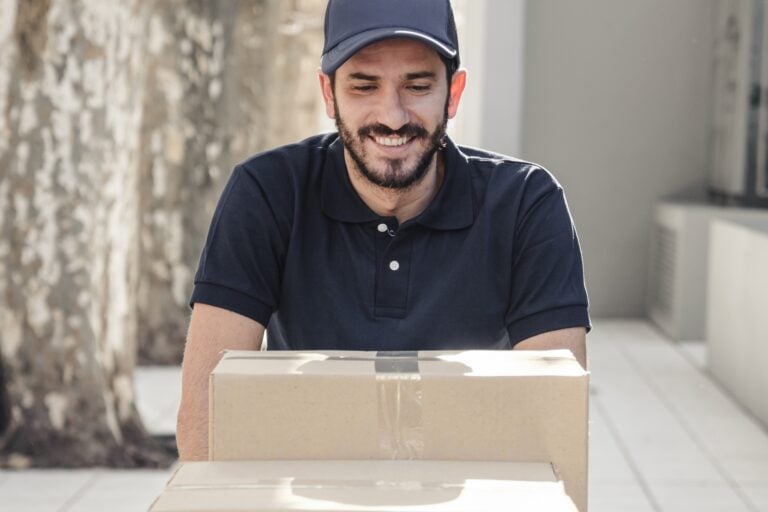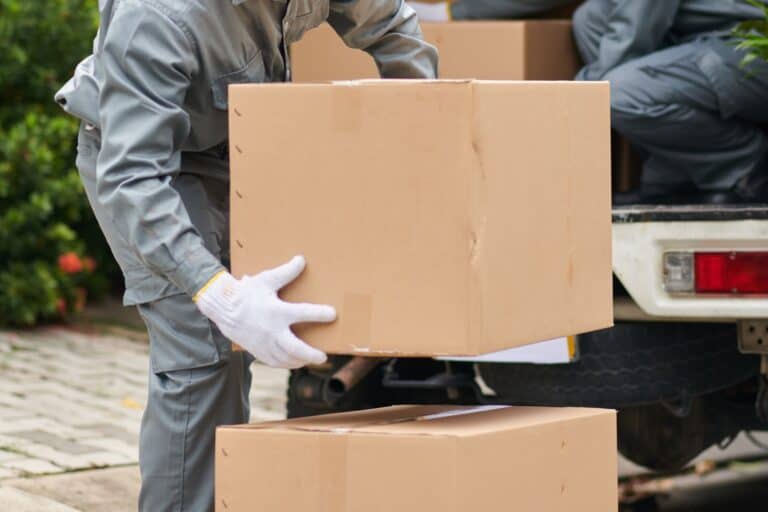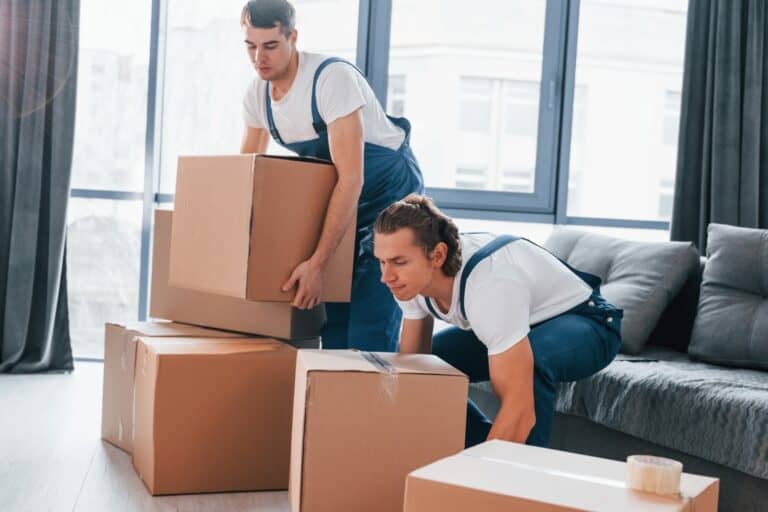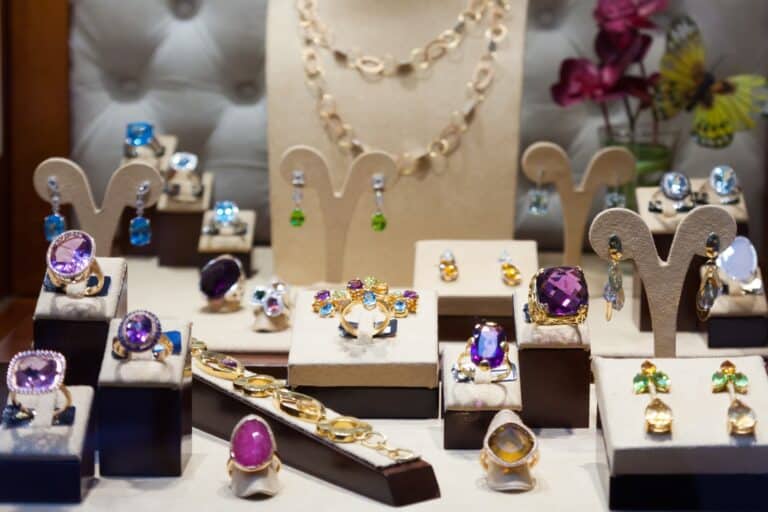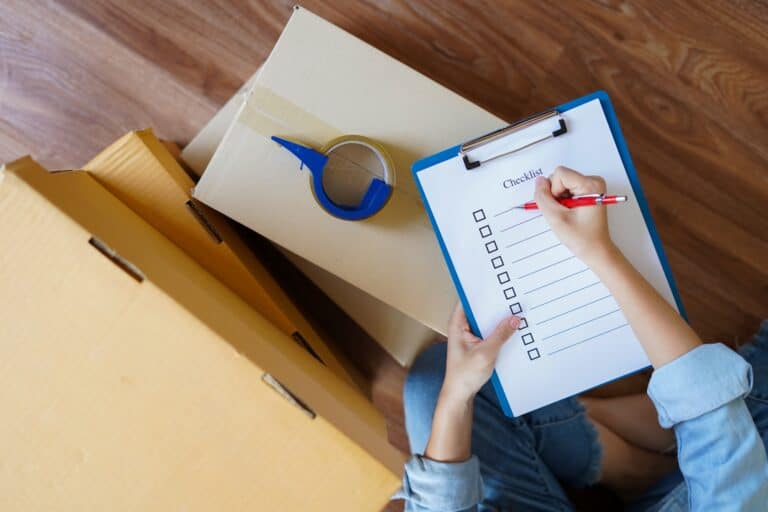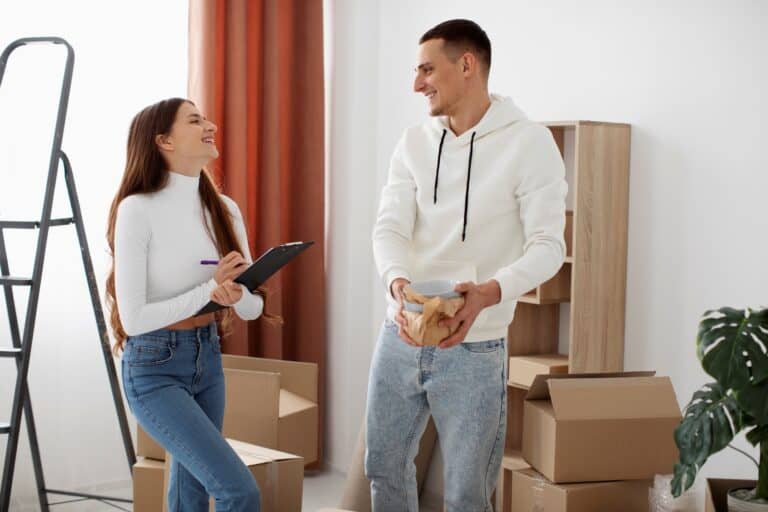Worried about your fragile items breaking during the move? This comprehensive guide on how to pack fragile items will provide you with invaluable tips to pack your breakables securely and efficiently. Learn which packing materials to use and follow our step-by-step instructions to ensure your delicate belongings reach East London safely and intact. From choosing the right packing supplies to mastering wrapping techniques, this guide covers everything you need to protect your fragile items during the move.
Key Takeaways
- Quality packing materials such as bubble wrap, packing paper, and sturdy boxes are essential to protect fragile items during a move.
- Use specific wrapping techniques for glassware, ceramics, electronics, and antiques to ensure maximum protection and minimise the risk of damage.
- Clear labelling and organisation of fragile items help facilitate careful handling during transport and streamline the unpacking process.
Essential Packing Materials for Fragile Items
Quality packing materials are essential for protecting your fragile items during a move. Good quality packing materials, sturdy boxes, and bubble wrap are crucial to prevent damage. The right supplies can significantly impact the safety of your fragile items during packing.
Essential packing materials include bubble wrap, packing paper, and sturdy boxes. Bubble wrap cushions your delicate items, absorbing shocks and preventing breakage. Packing paper offers an additional protective layer by wrapping items individually. Sturdy boxes are necessary to maintain the structural integrity and safety of fragile items during transport. Packing material is crucial for ensuring everything arrives safely.
Newsprint can be a practical and eco-friendly substitute for bubble wrap, providing a protective layer for fragile items. Secure the bottom and sides of your boxes with ample packing tape to prevent bowing underweight and add extra protection.
Other useful packing supplies include packing peanuts and furniture blankets. Packing peanuts fills empty spaces in boxes, preventing items from shifting during transit. Furniture blankets protect larger, delicate items like antique furniture. Investing in quality packing materials ensures your fragile belongings arrive intact.
Step-by-Step Guide to Packing Fragile Items
A methodical approach is necessary for packing fragile items. Start by wrapping each item individually in protective materials like bubble wrap or tissue paper to safeguard them during transit. Secure the wrapped items with packing tape to prevent shifting and maintain protection.
The best way to pack breakable items is to place them in individual boxes or compartments. Using soft materials like clothing or towels to fill any empty spaces can provide additional cushioning and stability.
Let’s dive deeper into specific packing techniques to pack fragile items and pack fragile items.
Wrapping Glassware and Ceramics
Wrap each piece of glassware and ceramics individually in packing paper or bubble wrap to ensure they are well-protected and prevent breakage. Smaller boxes minimise movement and keep fragile items safe.
Wrap glass items tightly with newspaper or packing paper, followed by bubble wrap for added protection. Use foam peanuts for extra delicate items like vases. Stack plates vertically in medium-sized boxes and secure them with packing tape to prevent shifting during transport.
Place cushioning materials at the bottom of the box to absorb shocks and vibrations during transport, further protecting your glassware and ceramics. Seal the box with packing tape to ensure nothing moves during the move.
Packing Electronics and TVs
Extra care is needed when packing electronics and TVs. Use the original packaging if available, as these boxes provide the best protection. If the original packaging is unavailable, wrap the TV screen in bubble wrap and secure it with packing tape. Adding towels or blankets provides extra cushioning.
Wrap cables securely in bubble wrap and label them to avoid confusion during unpacking. Keep these cables in a separate bag or box for organisation. Fasten a thick blanket around the TV screen and base with a rope or bungee cord for added security during transport.
Pack smaller electronics into smaller boxes, wrapping them in protective layers for additional safety. This ensures each item is individually protected and reduces the risk of damage.

Protecting Picture Frames and Mirrors
Specific techniques are required to protect picture frames and mirrors. Cover the front and back of each mirror with a thick piece of cardboard to provide a sturdy layer of protection against impacts. Applying an ‘X’ with masking tape on the glass of mirrors helps minimise breakage by reducing vibrations.
Wrap each picture frame individually in bubble wrap and secure it with packing tape to protect it from scratches and impacts. Cardboard dividers can further protect these items by keeping them separated and preventing collisions during transit.
Filling Empty Spaces in Boxes
Prevent items from shifting and getting damaged during transport by filling empty spaces in boxes with packing peanuts or crumpled paper for essential protection. These materials stabilise the contents of the box, ensuring everything stays in place.
Soft materials like towels, linens, or clothing can also serve as effective cushioning for fragile items, filling empty spaces and reducing the risk of damage during the move. Use packing paper to stabilise and prevent the movement of hollow items.
Fill any leftover empty spaces in boxes with packing peanuts, towels, or crumpled paper to enhance stability and keep your fragile items safe and secure during transit. Additionally, you can fill hollow items to further protect your belongings.
Labelling and Organising Fragile Items
Clear labelling ensures careful handling and efficient unpacking of your fragile items. Label each box with its contents and use indicators like ‘handle with care’ to alert movers. This helps to ensure that your items are handled with extra care during transportation.
Labels such as ‘Fragile’ can significantly affect how your boxes are treated during the move. A colour-coded system can enhance the visibility of fragile items among other boxes, making them easier to identify and prioritise during unpacking.
Labelling each piece of furniture and its parts facilitates organisation during unpacking. Labelling and organising your fragile items simplifies the packing and unpacking process, ensuring careful handling.
Special Considerations for Antique Furniture
Special considerations are necessary for transporting antique furniture safely. Disassemble large, bulky pieces before moving them to make handling easier and reduce the risk of damage. Wrap each disassembled piece in bubble wrap and secure it with packing tape.
Use corner protectors for extra protection, especially at vulnerable edges. Remove and wrap any glass or breakable parts in bubble wrap to prevent damage. Inspect each antique piece for damage immediately upon arrival to document any issues for potential claims.
Using Dividers for Extra Protection
Dividers add extra protection for breakable items. Cardboard dividers prevent fragile items from colliding during transit, reducing the risk of damage. They create compartments within the box, effectively organising and securing your items.
Place dividers between fragile items to minimise movement and enhance protection. This method is especially useful for packing glasses and other delicate items, as it keeps them separated and secure. Using dividers and taking extra care can prevent cracks and ensure your fragile belongings arrive safely.
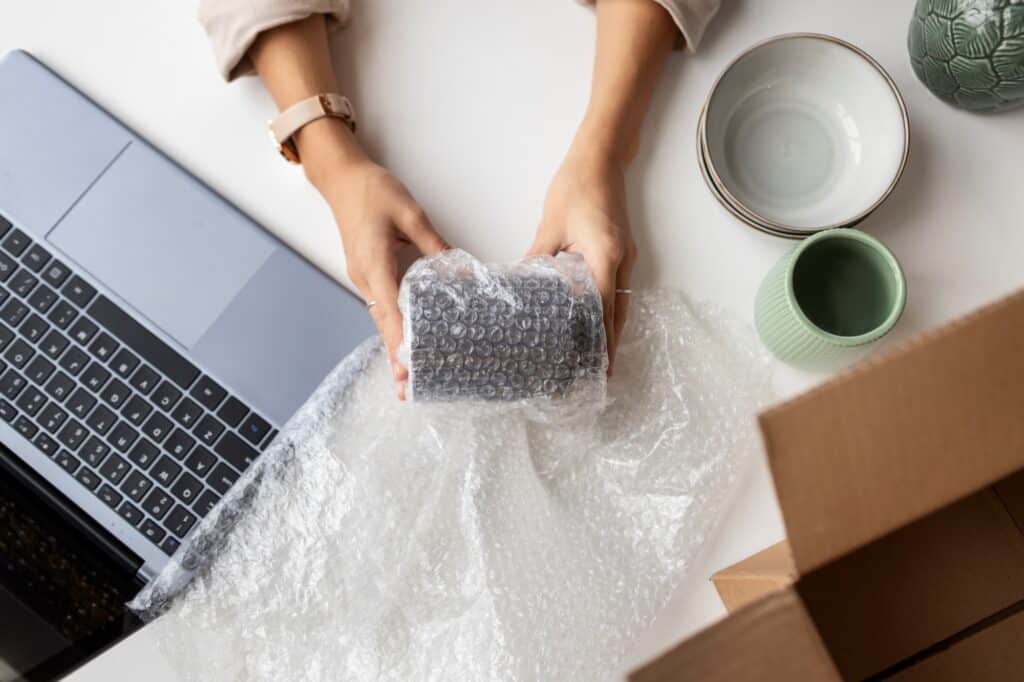
Transporting Fragile Items Safely
Safe transportation of fragile items for moving is the final step in the moving process. Consider professional moving services or self-storage options for large or very fragile items. Moving companies have the expertise to handle fragile items properly, ensuring they arrive undamaged. If you need to ship fragile items, it’s crucial to choose the right methods and materials.
Secure delicate antiques in the moving truck with straps to prevent damage during transit. Climate-controlled transport can protect antiques from temperature fluctuations during long moves.
Keep mirrors and similar items upright during the move to minimise breakage risk. Ensuring that these items remain vertical helps prevent damage and maintains their integrity throughout the moving process.
Alternative Packing Materials
Alternative materials can be used when traditional packing supplies are unavailable. Clothing and crumpled newspapers can be substituted for bubble wrap effectively. These materials provide a protective layer and cushion your items during transport.
Crumpled newspaper is an environmentally friendly option. Towels, linens, and clothing can also serve as additional cushioning, filling empty spaces and stabilising your items. Using alternative packing materials ensures your fragile items are protected, even when traditional supplies are unavailable.
Summary
In summary, packing fragile items for moving to East London requires careful planning and the right materials. By investing in quality packing supplies, following a step-by-step packing process, and using techniques like labelling and filling empty spaces, you can ensure your fragile belongings arrive safely. Remember, the key to a successful move is preparation and attention to detail. Happy moving!
Frequently Asked Questions
What are the essential packing materials for fragile items?
To ensure your fragile items are well-protected, use bubble wrap, packing paper, sturdy boxes, packing peanuts, and packing tape. These materials will help cushion and secure your items during transit.
How should I pack glassware and ceramics?
To ensure your glassware and ceramics are well-protected, wrap each item individually in packing paper or bubble wrap, and use smaller boxes with cushioning materials at the bottom. This approach minimises the risk of breakage during transport.
How do I protect electronics and TVs during a move?
To effectively protect your electronics and TVs during a move, use original packaging, wrap the screens in bubble wrap, secure the cables separately, and add towels or blankets for added protection. This approach ensures your devices arrive safely at your new location.
What should I do for antique furniture?
For antique furniture, disassemble large pieces and wrap each part in bubble wrap with corner protectors to prevent damage during transport. Always inspect for any damage after unpacking to ensure everything is intact.
Are there alternative packing materials I can use?
Absolutely! Packing alternatives such as clothing, crumpled newspapers, towels, and linens can serve as effective substitutes for traditional materials like bubble wrap. Consider these options to protect your items while being more resourceful.
